LineUp
• FULL SCHEDULE •

Saturday
Sunday
Jamestown Revival

Having grown up together in Magnolia, TX, Jonathan Clay and Zach Chance of Jamestown Revival have always shared a mutual love for music - from Creedence Clearwater Revival to The Everly Brothers to Guy Clark. Now residing in Austin, TX., and inspired by their musical heroes, they crafted a sound deeply rooted in harmony that merges sounds of the South with classic American and Western rock.
Recorded in a cabin in the Wasatch Mountains of Utah, Jamestown Revival's critically acclaimed debut album, UTAH, tells stories of their shared adventures and observations.
The Archetypes

Charleston's own Archetypes (Tommy Dew-vocals; Kevin Wadley-lead guitar, backing vocals; Joey Allawos-rhythm guitar, lead and backing vocals; Edwin Miller-bass; Geoff Cormier-drums) have released a new song, Gulfstream, their first new recording since 1993 Goblet. Also remastered for iTunes is their debut eponymously-named collection of songs originally released on cassette in 1989.
Known for their live shows, the Archetypes packed Myskysns, Club Dog Alley, Tremors and Wadley's Music Farm in the 90s. Tommy Dew's antics on stage were supercharged and magnetic. Safe to argue, he was and likely still is one of the most dynamic frontmen in Holy City band history. Urged by Wadley's sinewy leads, Dew belted out songs about sex, excess and the South that connected with alternative music lovers in college towns throughout the SEC and ACC.
Influenced by the leaders of the sing-about-what-you-know-and-where-you-live Southern rock movement, REM, the Archetypes also give major nods to the Meat Puppets, the Feelies, the Minutemen and the influence matter-of-factly listed by all the above bands, the Velvet Underground. Throw in some Grateful Dead and funky funk and the there you have what made a night seeing this band so damn sweaty and memorable.
A Thousand Horses
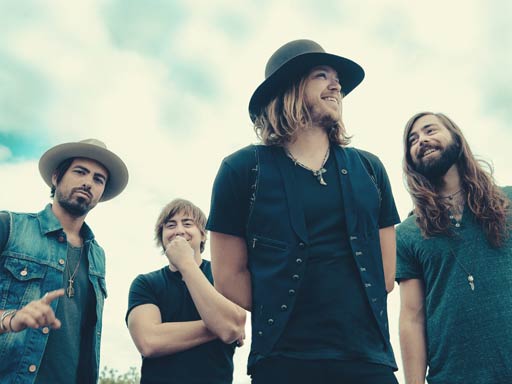
Drive across the rural South with the window down and the radio on. Hit scan and listen as muscular country, drawling rock, high gospel harmony, low-country blues and old school soul meld together into something special and distinct.
That’s the sound of A Thousand Horses and the exciting new band’s debut, Southernality. The 13-track Dave Cobb-produced Republic Nashville album yielded the No. 1 RIAA Gold-certified hit “Smoke” before it was released in June. And fans have responded to the unique, hypnotic song in a way that shows the band’s all-genre mix of classic influences remains in the DNA of young music fans in the digital age.
“Subconsciously, our audience grew up listening to those albums that we all love too and the reaction so far has just been exciting,” lead singer Michael Hobby said. “To me country music’s always been cool. I grew up on it. There’s a wider audience now. The lane seems to be a little bit wider for artists like Eric Church and Jason Aldean to push boundaries. People call it Southern rock or people call it country or people call it rock ‘n’ roll. To me it just feels like it’s all just music now.”
Hobby is joined in the creative core of A Thousand Horses by guitarists Bill Satcher and Zach Brown and bassist Graham DeLoach. Their friendship and similar interests have helped them create a distinct swamp boogie that fits right in with country music’s current party paradigm. The sound clicked immediately with fans and ATH has since made its television debut on NBC’s TODAY, Fox’s Fox & Friends and ABC’s Jimmy Kimmel Live! The group also earned a CMT Music Awards nomination for Group Video of the Year and performed on the show the same week it made first appearances at CMA Music Festival and Bonnaroo Music & Arts Festival.
Southernality - a blend of the words Southern and personality - rolls by in an easy gallop. It’s a night drive with the top down, a bucket of beers at a waterside roadhouse, a walk arm in arm next to moonlit breakers. “Smoke,” which set a record for the highest debut by a new act when it opened at No. 28 on the Country Aircheck country songs chart, offers a perfect entry point to the vibe as Hobby sings about a woman’s intoxicating presence in his life.
“I think a lot of people are relating it to their lives,” Brown said. “We’re seeing a lot of people post the lyrics on social media. I think ‘Smoke,’ lyrically in my opinion, it’s a really good story. I think it’s one of my favorite lyrical songs on the album. It’s easy for people to take those lyrics and apply it to something in their lives.”
The song reached unanimous No. 1 status the first week of June. Its power comes from the band’s chemistry, which was evident even in the earliest days when Hobby and Satcher met while checking out guitars at the only music store in Newberry, South Carolina. DeLoach, first cousins with Satcher, entered the picture summers and holidays while visiting from Georgia.
The trio moved to Nashville because it seemed like the natural place for their sound and soon invited friend of a friend Brown to join. They all lived together at first, writing songs, mapping out an ambitious approach. It was a special time when they formed the bond that would lead to their first record deal with a Los Angeles-based rock label trolling for talent in Nashville.
Cobb, whose work with Jamey Johnson, Sturgill Simpson, Jason Isbell and Chris Stapleton has garnered high praise, immediately bought into the band’s vibe and stuck with the group when they lost that first record deal, along with their manager and booking agent. The group persevered, found a new manager in Scott McGhee of McGhee Entertainment Management and landed a rare second chance. Cobb recorded the album at the Zac Brown Band’s Southern Ground Recording Studio in Nashville.
“They are a true band of brothers,” Cobb said. “They’ve been together through thick and thin. Also, make sure you never give them a key to the minibar.”
Alcohol did indeed play a role in shaping the album, but their parents’ record collections and older brothers’ listening habits had more to do with their wide-ranging influences. Southernality feels a little like another band of brothers, The Black Crowes. And The Rolling Stones and Lynyrd Skynyrd in Muscle Shoals. Tom Petty a few weeks after he met The Heartbreakers. And Led Zeppelin in the thrall of Howlin’ Wolf.
“I have two older brothers and they were always jamming all that stuff,” DeLoach said. “And I remember my oldest brother said ‘Gimme Back My Bullets’ was his favorite Lynyrd Skynyrd song. So he’d drive me to school and stuff and crank Lynyrd Skynyrd. And I grew up in Savannah, Georgia. Gregg Allman actually lives like right outside the city, so it was always a big deal: ‘There’s a Gregg Allman sighting!’ He’s like hanging out. So, a lot of Southern rock.”
Dig deeper, though, and new layers appear.
“My first live concert was Alan Jackson on the Midnight in Montgomery Tour, so there was a lot of Garth Brooks, a lot of Alan Jackson, a lot of Confederate Railroad and a lot of Alabama that my brothers loved and I always grew up listening to.”
These more mainstream country influences can be heard in album standouts like “Sunday Morning” and “(This Ain’t No) Drunk Dial,” the band’s second single.
The best way to hear the album, though, is to catch the band on the road with Darius Rucker’s Southern Style Tour this summer. ATH’s core members augment the band on the road, adding a drummer, keyboard player and three backup singers to really bring home the nostalgic feel of rock’s three-guitar era.
“The whole concept behind this thing is we’re a big band,” Satcher said. “We wanted to showcase the whole thing. I think we’re able to paint the picture of certainly what it’s like on the album, the full vision we had when we wrote these songs.”
“It’s been five years, all just traveling in a van around the country, sharing food and sleeping in that thing,” Hobby said. “Now we’ve got a record coming out and a single on the radio. It’s pretty cool.” Added Brown: “We had a period where we were back to Square 1. What do we do? Do we call it quits or do we keep going? This is what we do.”
Track by track
The guys in A Thousand Horses have a simple approach when it comes to songwriting: Whatever works.
The 13 songs on Southernality were written by members, sometimes with friends, sometimes alone. What emerges is a distinct picture of a band in the moment.
“These are our stories,” Hobby said. “We all lived these songs. They’re not made up or fabricated. Each one of the songs, we lived it. This is our story for the last few years and what we’ve gone through personally and professionally. This is what A Thousand Horses is.”
“First Time,” by Michael Hobby, Bill Satcher and Patrick Davis. “That song’s about somebody just knocking you out for the first time that you didn’t expect,” Hobby said. “There’s that old saying: There’s a first time for everything. That’s really what the song’s all about. It’s relationship-based but you can apply that to anything. It was a sunny day and we were sitting on the porch at my buddy Patrick’s house. We just started drifting on a thing and kind of started to develop a story.”
“Sunday Morning,” by Michael Hobby, Bill Satcher, Graham DeLoach, Zach Brown and Rich Robinson. “I think ‘Sunday Morning’ is an awesome track on the record. We wrote it with Rich Robinson of The Black Crowes. We all got together in this old church down the street from our house and set up amps and just got together and jammed for a couple of days. And then we were, like, ‘All right, let’s put down the axes for a minute.’ Then we sifted through the music and ended up writing that song. It was an amazing experience.”
“Smoke,” by Michael Hobby, Ross Copperman and John Knight. The No. 1 debut single from Southernality, Hobby says, “is a lustful song. It’s about being obsessed with someone or something that’s not necessarily good for you or that you shouldn’t have. The addiction to a cigarette is a metaphor. You can smell her on your clothes, you see her floating around the room when she’s dancing.”
“(This Ain’t No) Drunk Dial,” by Michael Hobby, Corey Crowder, Neil Mason and Cale Dodds. “We wanted to put a positive spin on drunk dialing, instead of really drunk dialing,” Hobby said of the group’s second single. “Here’s a guy wanting to pour his heart out to this girl _ obviously they’re in a breakup _ and he’s bringing up the fact, ‘No, I’m not drunk!’ Which I’m sure everybody says. This song he hears reminded him of her – it’s their song. He just wants to get off his chest how he really feels and she doesn’t care. It’s his plea: ‘I’ll remember everything in the morning, call me and I’ll tell it to you again. This is my truth.’”
“Heaven is Close,” by Michael Hobby, Bill Satcher and Graham DeLoach. “This is just a good-feeling song, a getting-away song,” Hobby said. “You’re gonna pack up that old suitcase with everything you own and you’re going to leave this place. ‘Let’s just go, the sun’s on your face, the wind’s in your hair and, man, doesn’t it feel good to be free. And free with you.’”
“Travelin’ Man,” by Michael Hobby, Bill Satcher and Jaren Johnston. “It’s just a cool fantasy song,” Hobby said. “It’s about being on the road. We were on the road pretty heavy at that time. Kind of like that whole thing when you’re on tour you’re kind of just drifting through space on this bus. We tried to make it sound cooler. You’re just a travelin’ man. You’re a drifting soul.”
“Back to Me,” by Michael Hobby, Bill Satcher, Graham DeLoach and Westin Davis. “A rebel boy in love with a small-town girl. It’s a simple story that I think a lot of people can relate to. He just lost this girl and he’s just telling her, ‘I’m sorry. I had my wild times, now please come back to me.’”
“Southernality,” by Michael Hobby, Corey Crowder and Neil Mason. “’Southernality’ is just kind of a word I made up being from the South,” Hobby said. “You know, sweet tea, the whole yes, ma’am, no ma’am thing? That lifestyle, that culture, that personality. We were born and raised in it. So we kind of just put two words together - Southern and personality. It’s become a worldwide thing. Everybody knows when you’re below the Mason Dixon Line.”
“Tennessee Whiskey,” by Michael Hobby and Bill Satcher. “That song’s a true story about me and my wife Caroline,” Hobby said. “The band was in Scottsdale for a show. Shit went down, as you might say, all the way to El Paso when we were on tour and I couldn’t come home, so I had to try to plead my case. Sometimes you drink a lot when you’re going through a breakup, trying to get it off your mind. ‘Eventually I’ll be home and we’ll work it out,’ and we did.”
“Hell on My Heart,” by Michael Hobby, Bill Satcher, Graham DeLoach and Zach Brown. “These are all relationship songs, it turns out,” Hobby said. “’Hell on My Heart’ is about being a better man and trying to get better for your relationship. In the first verse he’s very, like, ‘I can’t figure out why she left,’ and the second verse is, ‘Oh, I get it now. I understand why I have to be a better man.’ There’s a plea chorus to that song. It’s his plea, he’ll do whatever it takes to get her back.”
“Trailer Trashed,” by Graham DeLoach. “That’s a party song. It’s a good times song,” Hobby said. “It’s a kick your shoes off and stomp song. It refers to 1969 because a lot of our influences come from 1969 and it was a fun time. That’s an epic year. It’s just about having a good time. It’s a pretty simple, down the middle song. It’s not hard to hit that one.”
“Landslide,” by Michael Hobby, Bill Satcher and Zach Brown. “We wrote that around the time we broke up with our first label,” DeLoach said. “That was one of the first songs we wrote as a band and was kind of a staple for the band for the last little bit. That was kind of a finger to the man situation because of what we were going through at the time. We just wanted to be us, so that’s how it Came out. Listening back, we weren’t trying to intentionally do it. It just kind of Came out. It was kind of like grieving. It’s raw emotion in that song at that point in time.”
“Where I’m Going,” by Michael Hobby, Brad Warren, Brett Warren. “That’s about getting back to your small-town roots and how good that feeling is, how comforting that is,” Hobby said. “Being away in the big city, traveling a lot, you lose that feeling of home. As Dorothy says, ‘There’s no place like home.’ You want a small town where everybody’s the same. You’ve got good people, you’ve got your lady there, the love of your life, and that’s where you’re going. You’re kind of fed up with this whole other scene.”
Bruce Hornsby & The Noisemakers
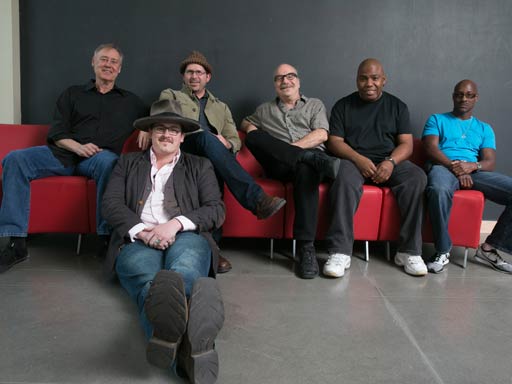
Almost three decades after winning a Grammy for Best New Artist and launching one of contemporary music’s most diverse careers, Bruce Hornsby still makes joyful noise as he discovers clever and expansive ways to chronicle dynamic musical snapshots of his often generously collaborative journey.
Nothing better illustrates this than Hornsby’s communion with his longtime band, the Noisemakers. And nothing catches that connection with more daring fluency than a couple of live collections released eleven years apart; 2011’s Bride of the Noisemakers, a set of concert recordings from 2007 to 2009, and 2000‘s Here Come the Noisemakers, which initially unveiled Hornsby and his band’s free-wheeling live approaches to the Virginia-born pianist and composer’s memorable songs.
Tapping into many of the genres that have influenced Hornsby’s music over the years—pop, jazz, bluegrass, country and modern classical—these collections feature songs from previous releases such as Big Swing Face (2002), Halcyon Days (2004), and Levitate (2009) -- as well as from Camp Meeting (2007), which featured bassist Christian McBride and drummer Jack DeJohnette, plus Hornsby’s acclaimed early releases such as Scenes From The Southside (1988), Hothouse (1995), and Spirit Trail (1998).
The Noisemakers are bassist J.V. Collier, a twenty-year veteran of the band, as well as keyboardist/organist John “JT” Thomas and drummer Sonny Emory, who have played with Hornsby twenty-four and twelve years respectively. Summer 2014 marks the arrival of two new Noisemakers -- fiddle/mandolin player Ross Holmes and guitarist Gibb Droll -- as well as the departures of longtime members Bobby Read and Doug Derryberry. Holmes currently fiddles for Mumford and Sons, has played with hosts of Nashville titans as diverse as Ricky Skaggs and the Dixie Chicks, and has performed with symphonies in the United States and Europe. Droll has played guitar on various projects involving Keller Williams, Kevin Kinney, and Brandi Carlile; he is also a composer, and painter.
“I think the guys in the Noisemakers like the gig because there’s never a dull moment and we attempt to keep the spontaneity factor high,” Hornsby says. “The idea always is, ‘Watch Bruce.’ I’m a fairly loose leader and I don’t like to rehearse. We mostly just ride around the country on a bus and laugh a lot. Hopefully you can hear that loose spirit in our shows.”
Times and band members change, and Hornsby knows it. Yet for all his forward thinking he remembers the past. “As the years go by and my music evolves, I've been increasingly interested in hearing some new sounds in my band,” he says. “As I get older, I've become more of a folkie than a jazzer, and I've felt the need to move the music accordingly."
"Bobby Read is one of the greatest musicians I know. I've loved playing with him, and hope to always have opportunities to work with him. He was with us for twenty years, and I'm so grateful for his great taste, good humor, soul, and musicianship during his long tenure."
"When I released the Spirit Trail album in 1998, I needed to find a guitar player who could play John Leventhal's great orchestral guitar parts that enhanced that music so much. Doug Derryberry filled that bill and much more, with his guitar, strong vocals, and mandolin playing giving us what we needed for fifteen years. He has been the oracle of the band; we all have gone to Doug for help in remembering old parts, chords, lyrics and endings through the years. Thanks go out to both of these great people for their efforts and contributions adding so much to our sound for many years."
For all his talents as a singer, bandleader and pianist with an instantly identifiable sound, Hornsby is a songwriter at heart committed to portraying his songs in changing ways that allow them to expand organically. This approach was further developed by Hornsby’s time with The Grateful Dead when he joined the legendary band between 1990 and 1995 for over a hundred shows. In the Dead’s vibrant tradition of loosely blending improvised folk and blues Hornsby found a shared musical aesthetic.
In recent years, he has pushed his artistic limits, working with bluegrass legend Ricky Skaggs, The Bruce Hornsby Trio, and jazz legend Charlie Haden. Hornsby has also scored a number of projects for filmmaker Spike Lee including the documentary Kobe Doin’ Work (2009), Red Hook Summer (2012), and the upcoming Da Sweet Blood of Jesus. Hornsby has contributed to all-star collections that pay tributes to Fats Domino, The Band and in 2014, Jackson Browne. A music graduate of University of Miami, Hornsby also has partnered with its Frost School of Music to establish the Creative American Music Program, a curriculum designed to develop the creative skills of talented young artist/songwriters by immersing them in the many traditions that form the foundations of modern American songwriting.
“In the spirit of musical evolution, I’m always trying to keep my band on their toes,” Hornsby says. “I was a sideman once and I know only too well how playing the same thing the same way night after night can become a dismal prison.” That recognition lay behind the 2006 release of Hornsby’s box set Intersections (1985-2005), which groups his long career into three different categories: “Top 90 Time;” “Solo Piano, Tribute Records, Country-Bluegrass, Movie Scores;” and “By Request (Favorites and Best Songs).”
The classifications illuminate Hornsby’s bedrock notions about his music: He wants to ensure that even his most familiar pop songs avoid the frozen-in-time quality of museum pieces. A third of the music on Intersections previously is unreleased, and most of the best-known tracks appear in live versions. The set also features “Song H,” a composition that was nominated in 2007 for a Grammy for Best Pop Instrumental.
Still, Intersections tells only a part of Hornsby’s extraordinary musical story. His three Grammy wins typify the diversity of his first decade of recording: Best New Artist as leader of Bruce Hornsby and the Range; Best Bluegrass Recording for a version of “The Valley Road” that appeared on the Nitty Gritty Dirt Band’s Will The Circle Be Unbroken Volume II; and a shared award with Branford Marsalis in 1993 for Best Pop Instrumental Performance for “Barcelona Mona,” a song for the 1992 Olympic Games.
The commercial successes and creative achievements of Hornsby’s superstar collaborations -- including many sampled passages chosen by hip-hop artists -- verify Hornsby’s fusion of wide appeal and musical adventure. Consider: His albums have sold over 11 million copies worldwide. The title cut from The Way It Is was the most played song on American radio in 1987, winning the ASCAP Song of the Year award. Harbor Lights won the 1994 of Downbeat Reader’s Poll Beyond Album of the Year -- a citation given to music from any genre apart from jazz or blues. The late Tupac Shakur, working with Hornsby, fashioned a new song over “The Way It Is” adding new lyrics and calling the result “Changes.” The track was an international hit and sold fourteen million copies.
Over the years, Hornsby has played on over a hundred records, including albums by Bob Dylan, Don Henley, the Grateful Dead, Bob Seger, Crosby Stills and Nash, Stevie Nicks, Cowboy Junkies, Squeeze, Chaka Khan, Liquid Jesus, Bonnie Raitt, Chris Whitley, Shawn Colvin, Bela Fleck, Clint Black, Del McCoury, Ricky Skaggs, Randy Scruggs, and Willie Nelson. Hornsby contributed end-title songs for the Spike Lee films Clockers and Bamboozled.
Hornsby has participated in memorable events: the Rock and Roll Hall of Fame 1995 opening concert, Farm Aid IV and VI, the Telluride Bluegrass Festival, Newport Jazz Festival, New Orleans Heritage and Jazz Festival, Bonnaroo, and Woodstock II and III. An avid sports fan, Hornsby -- solo and with Branford Marsalis -- has performed the National Anthem for many major events including the NBA All-Star game, four NBA finals, and the 1997 World Series Game 5. His work appears on the soundtrack to Ken Burns Baseball.
“I can be a slow learner,” Hornsby says, “and sometimes it takes me a while to arrive at the most soulful way to play and sing one of my songs -- or anyone’s song, for that matter. Our approach to playing allows songs to grow, evolve and change through the years. That’s where the improvisatory mindset has led us.”
It is a singularly rich place, a place for stirring noise-making.
Cam

California-born singer/songwriter Cam emerged as one of 2015's true breakthrough artists, achieving her first Platinum record and first #1 country single with "Burning House," which earned her a GRAMMY® Award nomination for Best Country Solo Performance. The success also sparked Cam to six nominations for the 51st Academy of Country Music Awards, becoming the year's most-nominated female artist in her first year as an ACM nominee. Her Untamed album, which released December 11, 2015, debuted at #2 on Billboard's Top Country Albums chart with the year's best first-week album sales by a debut country artist. With each song co-written by Cam, Untamed released to widespread critical acclaim from The New York Times, Entertainment Weekly, PEOPLE, AllMusic, the Associated Press, and many others.
Cam has been featured on such programs as Good Morning America, Today, and The Tonight Show, with live performances over the past year including Apple Music Festival 2015 in London, Stagecoach, SXSW, ACM Lifting Lives Party for a Cause, CMA Music Festival, the Grand Ole Opry, and more. Chosen among CMT's Next Women of Country, Cam began 2015 on multiple "New Artist to Watch" lists and closed the year with Untamed ranked among 2015's best country albums by Rolling Stone Country, The Washington Post, and others. Find her online at www.camcountry.com, on Twitter @camcountry, and on Instagram.
Clay Cook

Hello, Internet. This is awkward so I'll make it quick.
I was born on April 20th, 1978 (send cash, not presents) in Atlanta, GA. Had a relatively simple, suburban upbringing. My interest in music was a little out of the ordinary for most 5 year olds. I was actually PLAYING guitar by 7. While everyone else was playing video games, I was practicing scale fingers & chord changes. I am still good at Techmo Bowl though.
Fast forward 10 years. They don't let you take 'guitar' in public school. Soooo, I gave up on being a 5'8" white boy in the NBA. I picked up drums in the fine arts department in high school. By the time I was auditioning for Berklee College of Music, I changed my principal instrument BACK to guitar.
Berklee was great. You get out of it what you put into it. I met some life long friends there as well. I spent two years there & decided to leave school with my then current bandmate, John Mayer. John & I moved from Boston to Atlanta & started writing songs together. That faded away & I joined my Uncle's band: The Marshall Tucker Band. I learned SO much while touring with them.
I left that group to play bass in the first line up of Sugarland (a line up that looks almost nothing like today's duo). During this time I also started producing & engineering records in the Atlanta area. Throw a nice long run with Shawn Mullins in the mix & fast forward to late 2008: I join Zac Brown Band full time. ZBB allows me to stretch out on a bunch of different instruments. It's funny, but I feel that my whole life has been preparing me to be in this band.
Anyway, I REALLY enjoy being in ZBB... not to mention making records for Southern Ground Records full time. Not sure how life could get much better... but nothing will surprise me at this point - well, maybe if Zac's head opened up & an alien popped out... actually, never mind. That wouldn't surprise me.
Coy Bowles & the Fellowship
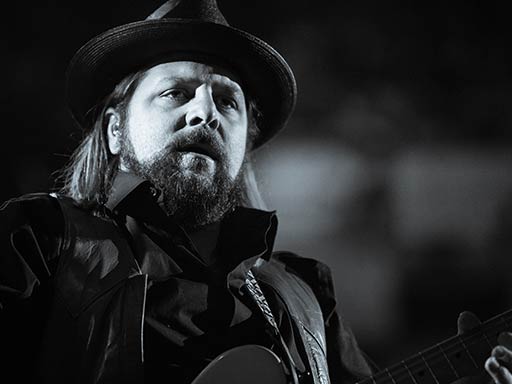
When I was a kid, I had a room that was next to my bedroom at my parent’s house. Actually, it was part of the attic. It was my world and secret passageway into music and all things creative and awesome. The walls were filled with photos of my favorite bands, musicians, and skateboarders that had been ripped out of magazines and stuck to the wall with thumbtacks and Scotch tape. There was a hammock in this musical, isolation chamber that was filled with sleeping bags and old pillows. I would sit in the hammock and listen to music everyday. I would sing as loud as I could and fill my body with music. It gave me the feeling that I was connected with a force that drives all things amazing. I would picture myself on stages playing for people that were there for only one reason - to get away from life and become part of this connection with all things amazing. I dreamed of being in a band with other musicians that were so in tune with each other that when united we could soar to musical places that no other combination of people could reach. We would sing and play songs about life, struggles, and love. This imaginary stage, fans, and band were and have always been all I ever wanted. About five years ago, I opened my eyes and looked out at a sea of people who were connecting to the music playing. I looked up from my guitar and saw a stage full of my best friends, who are the most incredible musicians I know. I was living my dream. I am still living my dream. I am Coy Bowles and I play guitar, organ, and write songs in the Zac Brown Band.
I started playing guitar at age 11. By the time I was 13, I had a band called Betty Doom. We played punk rock and rock-n-roll music at churches and at friend’s birthday parties in my hometown, Thomaston, Georgia. It still seems ironic that we played punk rock in church. We had rehearsal at my house so all the instruments stayed set up in my bedroom. I taught myself how to play bass, drums, and write songs. Something always happened when a guitar was in my hand. I would start playing for what I thought was 30 minutes, but when my parents hollered up the stairs for dinner, hours would have flown by like some sort of time abyss. I was addicted to the feeling of being in on the know. By that I mean I was and have always been totally consumed with feeling like I am connected to this crazy energy by being able to play the guitar lick or sing the song that makes me feel like I’m alive.
I went to college for biology at West GA College where I met Zac. I later shifted gears right before graduating and decided that, do or die, I was a musician and that was all that mattered to me. During this period, I started tinkering with the piano as a different method for writing songs. I took a year off and practiced eight hours a day in order to get into Georgia State University’s Jazz Studies program. I played guitar everyday, all day, for four years while in college, totally consumed with the music of Miles Davis, John Coltrane, and many others. I graduated and started my own band, Coy Bowles and The Fellowship. We opened for Zac Brown Band at the Sky Bar in Auburn, Alabama, and a week or two later, I got a call from Zac saying, “I like what you are doing with music. If you want to open for us full-time, the spot is there. Or if you want to leave your keys on stage and play keys with us on the next few shows then come on.” Years later, here I am! Still sitting in and loving every minute of it.
Oh yeah, I also wrote a children’s book called Amy Giggles - Laugh Out Loud and designed and made a fedora hat called the Troubadour.
Drake White and The Big Fire
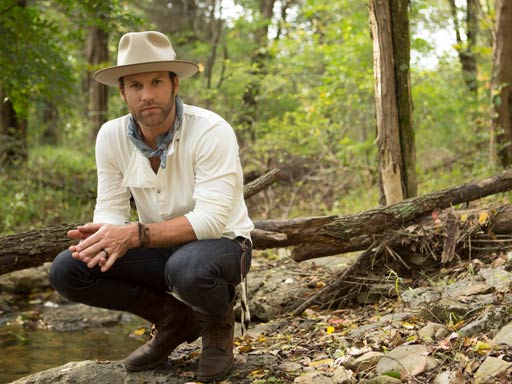
With a rustic, southern sound, Drake White embraces the new multifaceted nature of modern Country music. Originally from Hokes Bluff, AL, White’s been honing his sound on the road for years with his own band, The Big Fire. Made up of five like-minded friends, White says his chemistry with The Big Fire is essential to the diversity and high energy of his sound. The Big Fire band Came together thoughtfully over 5 years with White making sure each player fit in his vision of a cohesive group of guys who collaborate with him on the road and in the studio and as White puts it “we lean on each other’s ideas, talents and experiences.
His music is a mix of electric and acoustic guitar, bass & drums laying a thick groove, mandolin and fiddle swirling through the air and organ hovering above it all like the high harmony of a gospel choir. White’s sound is both familiar and modern, building on the successful band model laid down by Tom Petty & The Heartbreakers, The Allman Brothers Band and modern Country trailblazers like Eric Church and Zac Brown Band.
Named one of Billboard Magazine’s 10 Hot Country Artists to Watch in 2015 and dubbed “an electric performer with a gospel howl” by Rolling Stone Country, White made Rolling Stone’s list of the 37 Best Things We Saw at CMA Fest 2014.
Hunter Hayes
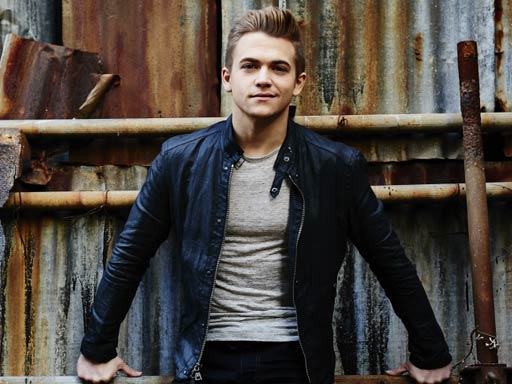
Listen closely to Hunter Hayes as he talks, that million-mile-an-hour voice, all rapid-fire energy and bustling passion. Not long ago he released his second album, the country chart-topping Storyline. But the 24-year-old, mind always churning, ideas jettisoning from brain to hand and voice, can’t help but wonder what lies ahead. “I’m on an unending search to find what it is that I love and how it is that I will do it,” he says of the wide-open, all-options future for a five-time GRAMMY nominee, CMA New Artist of the Year and youngest male act ever to top the Billboard Hot Country song chart. “How am I going to achieve getting the sounds that I love? What is it that I can’t resist?”
The wonder of a talent like Hayes is that even when he has a rare moment of reprieve from the mayhem of touring the world on a solo jaunt, breaking the Guinness Book of World Records’ mark for most concerts in a 24-hour period or, say, performing at the GRAMMY Awards, he’s focused on his craft. “I should be fatigued of writing,” he admits. “But I have written easily a third of whatever my next project is. It’s more of a daily circle now,” he explains of his omnipresent muse. “Maybe the next record will have no delays, no reverb, no big drum sound, and no stacked overdubbed guitar sound? Maybe it’s just me with a Telecaster? Maybe I get rid of all my other guitars, hide them so I’m not tempted to try them, and I just have to make it work with this one guitar? Maybe that’s what I’m looking for?”
If anything, Hayes has learned to let go. He’s still, as he says, “wound really tight,” but as the multi-instrumentalist’s journey – and outsize popularity – has exploded since his wise-beyondhis- years 2011 self-titled debut album, the Breaux Bridge, Louisiana-native has steadily been on a quest to self-evolve alongside his artistic output. Why be in the business of creation, he believes, if you, the person people are eager to know and love, is hiding in plain sight?
“I’ve been shy. I’ve been quiet,” he admits. “I’ve kept to myself. Because in a lot of ways, that’s who I am. I can talk about anything as long as I feel like I’m comfortable. If I’m nervous in any way, shape or form, I’m very careful. That’s something that has actually hurt me more than helped me. Because the less I talk, the less people know who I am, the more I sort of hide. I’ve just been afraid of saying the wrong thing or doing the wrong thing or leaving the wrong impression. But what I’ve realized is not leaving an impression at all is worse. It’s even less productive.”
Change for Hayes isn’t easy. He’s admittedly longed for control in his day-to-day life – whether that includes crafting a new album, dreaming up new melodies, or simply making sure he finds time to snag groceries in between vinyl and mandolin shopping. Hayes is learning to fly by the seat of his pants.
“I’ve had to let go of being a routine person,” he continues. “We have this saying in the band, ‘Do it Live.’ It’s how we live our lives: you do it live, you figure it out. I have to be brave enough as a person to live the way I make my music.”
It’s easy to look at Hayes and marvel at his oft-recounted successes: receiving his first guitar from actor Robert Duvall at age six; performing for the President the following year; signing with Atlantic Nashville Records at age 18; touring as a support act for Taylor Swift and Carrie Underwood not long after. It’s all there for the world to see. Hayes wanted more.
“Dude, I had it good!” he says of opening for the two female country superstars. “I could not sit here and think that happens every day by any means. Trust me, I thank my lucky stars! But it said a lot about my heart when, even with all that, I was still pounding on the table fighting to get more than 40 minutes and a backdrop. I wanted to put on a show.”
Hayes’ hardscrabble mentality translated into this past year’s monumental “We’re Not Invisible” headlining tour, a dream realized for a musician whose concept for the massive live outing was utterly visceral.
“I wanted production. I didn’t want just lights and a video screen,” he explains, his voice speeding up with excitement as he recalls his vision for a live show. “I wanted more than that. I wanted my fans to experience more of a show. I wanted new arrangements; I wanted surprises. I wanted stuff that just catches everybody by surprise. I wanted a part of the show to be unplanned. I wanted energy. I wanted to be able to run around a stage, jumping up and down. I wanted to be a mix between Chris Martin, Garth Brooks and Michael Bublé.”
If Hayes’ live show is a wild, no-holds-barred vision put into action, Storyline is its logical predecessor. Expertly crafted yet cut with a free-flowing spirit where all ideas are worth exploring, the 14-track affair showcases Hayes’ diversity and unerring commitment to not staying the course. When posited against his debut album, Hayes views Storyline as the “person your parents saw coming home from college after a year.”
“My only agenda was just to make sure I wasn’t bound by repeating history, that I wasn’t locked into doing what I’ve already done,” he says. “I wanted a record that was diverse and different and had a little bit of everything.”
And so on an album as equally influenced by Fleetwood Mac as Nickel Creek, there’s the harmony-drenched, whiplash “Tattoo” and the foot-stomping “Wild Card” sharing space with more tender offerings like “Invisible” and “Still Fallin.” It’s his duty, Hayes says, to continue to make music he’s proud of.
“My job is to find my sound based on the things that inspire me,” he says. “It’s not about intentionally having this or that or the other. My job is to find my own sound and bring my love for country music and country songwriting and storytelling and musically introduce it in a way that sounds like me.
“I just want people to know me,” Hayes says, taking a deep breath as he looks into the crystal ball he calls his unpredictable life. “Having someone care about what you’re saying is a groundbreaking feeling. That is a beautiful, life-changing experience every time. You don’t get used to that.”
John Driskell Hopkins
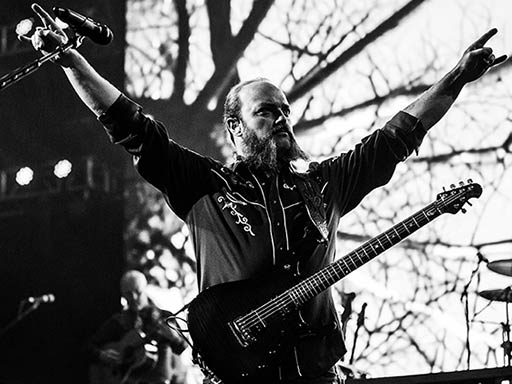
Howdy, folks. John Driskell Hopkins here. I was born in San Antonio, Texas on May 3, 1971 at Lackland AFB and I was raised in Gainesville, GA. (Go Big Red)
I have been singing since I could talk. Like a lot of us who grew up in the South, my earliest musical experiences were in the church choir. Choir was a great place to gain a real understanding of vocal harmony and musical structure. In fifth grade, I started piano lessons and began to learn about music theory in it's simplest forms. Later, I applied what I had learned to my Dad's old Martin guitar knock off that I found under the bed. I started playing guitar and bass in high school and formed my first band with my buddies. We were called Only For Tomorrow and we played mostly U2 and REM covers. Poorly...
Having always been heavily involved in the theatre throughout high school, I went on to graduate Florida State University with a degree in General Theatre in 1993. My band at FSU was called The Woodpeckers. We played every bar in Tallahassee, I think, and later released a CD under the name Distant Relatives. I was the lead singer. I will always treasure that experience and the guys I played with. Being in that band showed me that a life in music was not only possible, but attainable and sustainable.
After college, I moved home to Atlanta and formed the band Brighter Shade with great guys that I still play with today. We have released two independent albums and played countless gigs. When Brighter Shade's gig schedule slowed down in the early 2000s, I began to focus more on producing and writing in my studio which I named after the band. I recorded, produced and performed on many different records with many different artists during those years. One of them was named Zac Brown.
I met Zac at CJ's Landing in Buckhead in 1998. I was hosting their Tuesday night open mic night and Zac Came to perform. I met Sonia Leigh there as well, coincidentally. It was a fabulous platform for new talent. Borrowing from Eddie's Attic, we made the open mic a small competition and I awarded winners a small cash prize and a song in my studio. Sonia actually won one of them...
Zac and I remained friends over the years and in 2001 we began recording together on what would eventually become his Home Grown album in 2003. We chipped away at it piece by piece as he was already very busy with gigs both in the Atlanta area and regionally. It was in the studio with Zac and Shawn Mullins in February of 2005 that I heard the beginnings of "Toes". Zac had come in to demo the song and work through some of the kinks. I'm a pretty good kink straightener. It was then that I learned that Zac was in need of a bass player. I volunteered to sit in until he found a permanent player.
I truly believe that my intentions at the time were merely to get out and have some fun with my buddy and step aside when he found someone to play bass. I have always known that singing harmony comes very naturally to me and I'm a very meat and potatoes bass player that loves following the kick drum. What I didn't really expect is that we would all play together so effortlessly. After a few weeks, I said to Zac "If you're not still looking, then I'm staying." The crowds were becoming rabid. One time, this huge guy got so into our performance, he repeatedly smashed his hand into an already broken glass on the front of our stage. We played six nights a week and packed the bar every night. Jimmy and I exchanged glances while opening for Angie Aparo and I remember thinking, "Damn. We've really got something here."
The next three years were sometimes brutal, sometimes hysterical, sometimes glorious, but always magical. We were going to call it Zac Brown and The Grit, but instead we named it Zac Brown Band. We played over 260 shows in 2006. We recorded half of The Foundation at my studio and half in Nashville. Some weeks we made negative money and other weeks we made up for it. We rode in an airport shuttle death trap up into the Rockies and back down to Miami. Guys got divorced. Guys got married. Babies got born. Families got built. Dreams got realized. When Chicken Fried made it to the radio in 2008, the sky opened up.
Being in this band has taught me so much about myself. It has made me realize a lot about who I am and who I want to be. It is a band where anything is possible and there are no limits to what can be achieved. The music that we write and perform has a Southern identity, but is in many ways without genre. We never come to the table with a preconceived notion of what the music should or shouldn't be. We debate. We disagree. We celebrate. We rejoice. In the end, we stand together and we often marvel at what has come to pass this far. It's an incredible journey filled with incredible people, and it has only just begun.
Kacey Musgraves
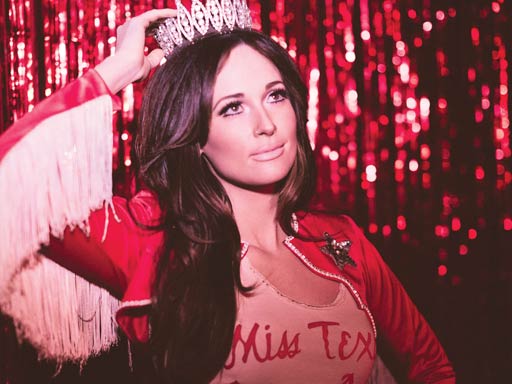
Two decades ago — long before Same Trailer Different Park turned her into a Grammy-winning country star with sold-out tours and Top 10 hits — Kacey Musgraves participated in her first (and only) beauty pageant.
"My hometown is pretty famous for its sweet potatoes," she says, "and every year, they hold the Golden Sweet Potato Festival. They crown a Sweet Potato Queen and a Little Miss Tater Tot for little girls. I only competed for Little Miss Tater Tot once, when I was about three, and lost miserably to a girl in a sparklier dress."
The pageant world, with its fake smiles and sky-high hairdos, wasn't the best match for Musgraves. She was more interested in songwriting, finishing her very first tune at 9 years old and learning her first instrument, the mandolin, as a pre-teen. Years later, though, the peculiarities of daily life in a small town — along with the places she's visited (and people she's met) since moving away— are back on her mind.
It's been years since Musgraves lived in Golden, Texas, her childhood home of roughly 600 people, but the whirlwind that followed Same Trailer Different Park — a debut album that topped the country charts, took home two Grammy Awards (including Country Album of the Year) and sent Musgraves halfway across the world on tour — made her think hard about where she Came from. Pageant Material, her second album, pays tribute to those Bible Belt roots, shining a light on a hometown girl who's grown up, expanded her worldview and done a lot of livin' since skipping town. It's an album about where she's from and where she's going, full of autobiographical details that are humorous one minute and heartwarming the next.
"I really wanted this album to have a classic feel, like a lot of the records I know and love," says Musgraves, who name-checks artists like Willie Nelson, Glen Campbell and Ronnie Milsap as influences on Pageant Material's easygoing stride. "I intended on it having a laid-back yet lush, slightly kitschy, western vibe. And most of all, I wanted it to feel like me."
Appropriately, all thirteen of the album's songs were co-written by Musgraves, who teamed up with the same group of songwriters who'd helped bring Same Trailer Different Park to life several years earlier. Those names may be familiar — Brandy Clark, Luke Laird, Shane McAnally and Josh Osborne, along with additions like Natalie Hemby and Ashley Arrison — but the songs are new, dreamt up during a songwriter's retreat in West Texas as well a handful of sessions back home in Nashville.
During the gorgeous "Late to the Party," Musgraves lingers with her boyfriend before a big get-together, knowing that he, not the party, is the real destination. She kicks back and enjoys life at a slower speed with "High Time," whose twangy chorus — punctuated by a whistled riff worthy of a high-lonesome cowboy — doubles as a nod to the childhood years Musgraves spent performing western swing music. On "Dimestore Cowgirl," she breezes through some of the more surreal highlights of her days on the road, from an early-morning European boat ride that took her band past the White Cliffs of Dover to a night spent in the same middle-of-nowhere motel where Gram Parsons spent his final hours. "I'm still the girl from Golden," she admits during the song's chorus, a reminder that no matter how big her career gets, she'll always be a small-town native. Later, with "This Town," she stresses the importance of staying pleasant in a cozy town where everyone knows you, and during "Biscuits" — a song inspired by her mother's advice to "kill 'em with kindness" — she explains some simple, yet important, things she's learned her 26 years.
Musgraves recorded Pageant Material in a unique way, capturing the songs during a series of live studio sessions. The goal was to harness the energy of her concerts, rather than build a record track-by-track and overdub-by-overdub. To lighten the mood, she decorated Nashville's historic RCA Studio A with fluorescent, life-size cacti and served fresh biscuits during breaks. She also brought a handful of plastic beauty pageant crowns into the studio and handed them out to her band, which included members of her touring lineup as well as pedal steel player Paul Franklin, drummer Fred Eltringham, and other top-tier players from the Nashville community. Musgraves pulled triple duty during the recording sessions, serving as singer, songwriter and co-producer on every track.
Since Pageant Material is such a personal project, it's only appropriate that several family members contributed to the album's creation. "This Town" begins with the voice of Musgraves' beloved Memaw — grandmother Barbara Taylor — who worked as an ER nurse in Texas until her passing in December 2013.
"We always loved to get her going, telling stories about the crazy stuff she'd seen lately at work," Musgraves remembers. "One night a couple years ago, we were all sittin' around her in the living room and made her tell stories. I secretly pressed record on my phone. I just thought for some reason I should, never thinking I'd end up using it. This particular part of the record has been a source of sadness and happiness at the same time. I really miss her, but it makes me smile knowing that her voice has literally become embedded in my musical legacy."
Likewise, Musgraves' little sister, Kelly Christine Sutton, shot the photographs for the album, including the throwback cover art. On a record that deals so heavily with Musgraves' roots — where she Came from, how she grew up, and what her small hometown looks like from afar — the presence of her relatives adds an authentic touch.
"Pageant Material lives in a western-tinged world, and the songs are like little stories," Musgraves says. "They set a vibe and a tone, and all make sense living in the same space. I think I'll always be affected by growing up in a small town, so it still inspires a lot of my writing. But there are some viewpoints on this record that I hadn't written from yet. More than anything, it's life and society, making mistakes and my relationships that continue to inspire me."
Marshall Tucker Band
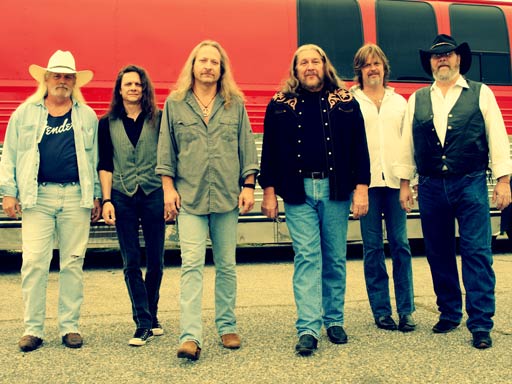
In the early fall of 1973 The Marshall Tucker Band was still a young and hungry group out to prove themselves every time they hit the stage. Their debut album had already spawned numerous hits. The band’s recent release of their Greatest Hits album, in traditional vinyl form, is a time capsule from that period. “We were a bunch of young guys who didn’t know any boundaries” says founding member and longtime lead singer Doug Gray. As it turned out, the collective talents of The Marshall Tucker Band took them very far indeed. More than four decades later, the new vinyl Greatest Hits release takes us back to the early years of The Marshall Tucker Band, both literally and physically.
Still led today by founding member and lead singer Doug Gray, they represent a time and place in music that will never be duplicated. Gray is quick to credit the band's current dynamic members with carrying on the timeless essence of The Marshall Tucker Band sound. Current members include the highly respected drummer B.B. Borden, a former member of both Mother's Finest and The Outlaws, multi instrumentalist Marcus Henderson of Macon, Georgia, plays flute, saxophone and keyboards in addition to lead and background vocals, Pat Elwood on bass guitar, and Rick Willis on lead guitar and vocals, both of Spartanburg SC, are disciples of the Caldwell Brothers. Acclaimed lead guitarist and vocalist Chris Hicks recently rejoined the band after a two-year absence. Together they present a powerful stage presence as they continue to tour the country and continue to be powerful force in the world of music.
The Marshall Tucker Band got its start in Spartanburg, S.C. when Gray teamed up with Tommy Caldwell and Toy Caldwell, Paul T. Riddle, George McCorkle and Jerry Eubanks, borrowing the name "Marshall Tucker" from a piano tuner whose name was found on a key ring in their old rehearsal space. In 1972, they signed with Capricorn Records, the same label that guided The Allman Brothers Band, Wet Willie, and others to national fame. The MTB opened shows for The Allman Brothers in 1973, and the following year, they began to headline their own shows across America due to the platinum-plus sales of their debut album. They toured constantly playing sheds, stadiums, theaters, fairs, and festivals.
In years to come, The Marshall Tucker Band would wow critics and influence major country acts like Alabama, The Kentucky Headhunters, Confederate Railroad, and Travis Tritt with its definitive blend of rock, rhythm & blues, jazz, country, and gospel. Now, thanks to the expanding scope of today's music, a new generation of fans is learning what the rest of their fans have known for so long- that good music knows no boundaries. Along the way, the band has recorded twenty two studio albums, three DVDs, three live albums and many compilations.
In 1980 Tommy Caldwell died as a result of injuries from an auto accident. In 1984 Toy Caldwell, George McCorkle, and Paul Riddle decided to retire. Doug Gray and Jerry Eubanks with the blessings of the other three continued to record and perform as The Marshall Tucker Band. 1n 1993 Toy Caldwell, who wrote the majority of their songs, passed away, as did George McCorkle in 2007. Jerry Eubanks retired in 1996 and Doug Gray continues to lead the current band of fine musicians winning new young fans as well as satisfying the loyal fans of several generations.
Years of rigorous tour schedules earned the band the respect of critics and countless dedicated fans. With hit singles like "Heard It In a Love Song," "Fire On The Mountain," "Can't You See," and "Take The Highway," The Marshall Tucker Band earned seven gold and three platinum albums while they were on the Capricorn Records label. During the 90's, the MTB scored four hit singles on Billboard's country chart and one on Billboard's gospel chart. Their music has also been featured on the soundtracks of movies such as Smokey and the Bandit, Blow, The Pursuit of D.B. Cooper, Shipwrecked, Crank 2, Don’t Mess with Zohan, Stop Loss, Swing Vote, Taking Chance and many others as well as many TV Shows.
“The buying public never really cared whether we were country or rock and roll" says Gray. "They called us a Southern rock band, but we have always played everything from country, jazz, blues, Rock & Roll and all things in-between. As we've become older," Gray grins, eyes twinkling, "our Southern heritage seems to come out even more. But no matter how old we get, we can still rock your socks off." Gray also notes that people have gotten "married and buried" to classic MTB songs like "Desert Skies" and "Can't You See". After 40 years, The Marshall Tucker Band continues to be played on classic rock and country radio, and they have never stopped touring.
Today the band records on its own RAMBLIN’ RECORDS Label which is distributed by SONY by way of a joint venture with SHOUT! FACTORY and continues to record new material and continues to regularly tour the country to the delight of their fans, old and new.
Michael Franti & Spearhead
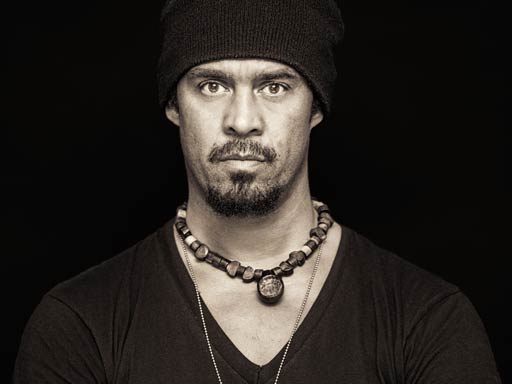
Musician, filmmaker, humanitarian, Michael Franti, is recognized as a pioneering force using music as a vehicle for positive change as well as his unforgettable, high energy shows with his band, Spearhead. With the multi-platinum success of his song "Say Hey (I Love You)" and the chart breaking 2010 release of The Sound Of Sunshine, Franti and his band guarantee a show that will be thought provoking as well as energetic.
"Music is sunshine,” says Franti, one of the most positive and conscious artists in music today. “Music gives us new energy and a stronger sense of purpose.”
Franti has a brand new single, “Once A Day” the energetic new song from upcoming debut album on Fantasy Records. "Once A Day" was produced by Supa Dups (Eminem, Damian Marley, Bruno Mars) and features special guest Sonna Rele. With lyrics such as "I heard the purpose of life is to live a life full of purpose" and "So just believe in yourself , don't let nobody bein' negative, tell you what to do," this new song has the same feel-good, inspiring vibe as "Say Hey (I Love You)," his 2x platinum hit single.
Muddy Magnolias

In recent years, lots of attention has been paid to Nashville’s expansion beyond the country music community, as rockers like Jack White, the Black Keys and Kings of Leon have relocated there to take advantage of the history, atmosphere, and infrastructure of Music City, U.S.A. But this, of course, isn’t the first time that less-predictable artists have been attracted to Nashville. In the late 1960s and early 1970s, rockers like Bob Dylan, Paul McCartney, and Simon & Garfunkel traveled to Tennessee and emerged with classic recordings; Jimi Hendrix once said that Nashville was “where I learned to play, really.”
This is the Nashville that the Muddy Magnolias represent. It’s what drew Kallie North, from the Mississippi Delta, and Jessy Wilson, a native of Brooklyn, to the city in pursuit their musical dreams. When lucky circumstances brought them together and they formed the striking, genre-smashing duo Muddy Magnolias, they proved that Nashville remains a place pointing to music’s future as well as its traditions.
Before even putting out a single, Muddy Magnolias have been earning raves from the national press, including Rolling Stone (“a sound that melds city grit and Delta dirt, exploding onstage not like two lead singers but more like parts of the same whole…Performed as if Mick Jagger and Keith Richards inhabited the Indigo Girls) and Elle magazine (“a country, soul, and R&B cocktail that’s heavy on harmony and candid, occasionally gritty lyrics...reinventing the American Woman). Now, with new music produced with Butch Walker (Weezer, Pink, Panic! At The Disco, Fall Out Boy) the pair is poised for its real breakthrough.
Wilson has been singing since she was a child. She was starting to enter the elite level of R&B—touring as a back-up singer with John Legend, and co-writing songs on albums by Fantasia and Ledisi that earned Grammy nominations—when she decided to look into relocating to Nashville. North, born in southeast Texas, grew up playing and singing music with her family. She moved to the Mississippi Delta and worked as a photographer until her husband gave her a guitar and she began writing music.
When the two Came together to make music they discovered that they had different ways of working. “Kallie was used to writing alone, on a guitar, and I spent so much time writing to tracks and beats,” says Wilson. “So we’ve really had to develop a style together.” And, of course, she notes that their sounds were based in disparate sources. “We have some of the same influences, but the meat of our influences is rooted in different things, so it’s fun to bring those together.”
One notable aspect of Muddy Magnolias’ songs is the way in which they offer the perspective of grown women, with hard-earned, real-life experiences. “We have amazing stories, and they’re not perfect,” says North. “They’re filled with insecurity and pain, and also being badass—moments of taking on the world and moments of being taken on.”
By looking at their differences as strengths and opportunities rather than limitations, Muddy Magnolias have found their way to music that is honest, organic, and rich. “I don’t think we’ve put any actual mental time into shaping a sound,” says Wilson. “You spend years absorbing everything and then when you go create, it just naturally comes out. We are still evolving every day.”
Old Dominion
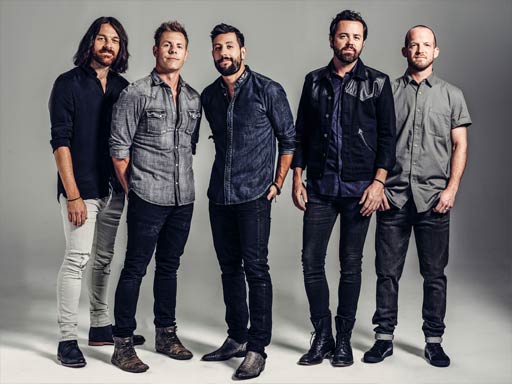
Old Dominion may be best known as a nickname for the Commonwealth of Virginia, but the moniker is set to become synonymous with great country music if the five members of Old Dominion have their way.
Tipped by Billboard, Rolling Stone and Huffington Post as a 2015 band to watch, Old Dominion brings their spirited take on modern country to their RCA Nashville debut, Meat and Candy. While undeniably country, the songs sparkle with clever lyrics, innovative instrumentation, genre-busting arrangements and finger-popping melodies. Even the album’s title alludes to the set’s versatility. “When we first sat down to pick songs for the album, we had a lot of sing-a-long, fun, ‘candy’ songs,” says lead singer Matthew Ramsey. “We decided we needed to show our more serious side a little too. We needed ‘meat’ songs. We needed meat AND candy. "
The debut single/Top 10 hit, “Break up With Him,” features Ramsey’s seductive spoken verses bolstered by a spiky electric guitar line. Elsewhere on the diverse set, an early romance gets revisited on wistful, nostalgic “Nowhere Fast,” while on “’Til It’s Over,” an eager suitor is willing to go with the flow.
If fans aren’t yet familiar with the quintet’s vibrant sound, they have heard the members’ collective handiwork as songwriters on hits for Kenny Chesney, Blake Shelton, Dierks Bentley, Luke Bryan, Keith Urban, and The Band Perry, among others.
In today’s world of prefabricated bands put together by producers and acts discovered via reality TV, Old Dominion stands out as a group that formed authentically through the members’ shared love of music and songwriting. They paid their dues mile after mile; a band of brothers in the truest sense.
Even their name attests to their shared roots. Four of the five members have connections to Virginia: Ramsey and drummer Whit Sellers met in middle school around Roanoke. Sellers then beCame friends with guitarist Brad Tursi and bassist Geoff Sprung at Harrisonburg’s James Madison University. Separately, they wound their way to Nashville as songwriters, performers and/or sessions players, eventually meeting up with Detroit-raised multi-instrumentalist Trevor Rosen. As they continued pursuing their individual songwriting and session work, Tursi, Sprung, Rosen and Sellers served as Ramsey’s backing band.
“It was kind of this organic thing,” Sprung recalls. “The band was doing as much as we could while pursuing other stuff and it hit a point where things got busy enough that we said, ‘We have to give this an honest go.”
After toiling under various names, the band Came up with Old Dominion in 2007. “It was a struggle to come up with a name that reflected our Virginia ties,” Sprung says. We tried state birds, state flowers, and every reference. We assumed there was already a band called Old Dominion, but when we Googled it, all we got was a vet service.”
Old Dominion beCame road warriors, playing close to 200 dates a year with the help and set-up of Morris Higham Management who manages and books the band. With the direction of Old Dominion’s new found partnership with their management company it wasn’t long until the band attracted the attention of John Marks, SiriusXM’s head of country music programming, who starting playing the band’s music on The Highway channel in 2013.
“He was a big supporter,” Ramsey says. “We were this little band handing out free EPs, playing in the south to nobody and then, suddenly, we had a national audience. We could go to the west coast and people would know our music.”
Old Dominion showcased for record labels, but the timing wasn’t yet right. That all changed with “Break Up With Him,” the one song on Meat and Candy written by all five members. The Highway began playing the song and then terrestrial radio stations also started to give it a spin—an almost unheard of feat for an unsigned band.
“The songwriting success started to fuel the band,” Rosen says. “That helped us get taken seriously. It all started to snowball together. People were paying attention.”
Word of Old Dominion’s growing popularity got back to RCA, who signed the group In March. “We were so busy on the road that we had to sign the deal at baggage claim at the Nashville airport,” Ramsey says. “We landed, signed the contract, and took off again.”
Their hectic tour schedule made finding time to write, much less record, challenging. They wrote with each other and then would bring other songwriters on the tour bus to collaborate as they moved from town to town.
In addition to headlining their own dates, Old Dominion were handpicked to open for Kenny Chesney on this summer’s blockbuster Big Revival Tour and have already been pegged for his 2016 outing. They learned from the superstar on and off stage. “We’re trying to figure out as we grow, how we can model after him,” Sprung say. “The energy level he delivers is phenomenal. We watched backstage every night. There’s no lull.”
Once in the studio, Old Dominion nabbed their pal Shane McAnally, best known for his work with Kacey Musgraves and Sam Hunt, to produce Meat and Candy since he had already worked on an EP they released through Nashville indie Thirty Tigers (Songs from that self-titled set have been streamed more than 24 million times on Spotify). They grabbed time whenever they could, including recording five songs in one day—a feat that might be daunting for other bands, but given their demo and session work experience, it was a snap. They have nothing but praise for McAnally. “Shane’s really able to hone in on what works for a song and by the end come out with this perfect mixture of the best of all of it,” Sellers says. “He also wasn’t afraid to propel the band to its absolute best or call them out,” Sellers adds. “He’d say, ‘This is good’ or ‘This is the worst thing. We’re never going to do it again.’ And we’d agree.”
That effort included re-working songs right in the studio and not being afraid to throw away the demo version. “There was one particular song, ‘Crazy, Beautiful, Sexy.’ Every time we’d record it, Shane would say, let’s forget about the demo and do something different. And it Came out so cool,” says Tursi, of the up-tempo love song. “It would never have ever come out that way if he hadn’t pushed us.”
Unlike many Nashville artists who record with session players instead of their touring bands, Old Dominion played almost every note on Meat and Candy themselves. “That’s something we’re really proud of and want people to know,” Sellers says. “The only session musicians we brought in were for keyboard and an acoustic guitar player.”
The band strived for authenticity over perfection. “Whatever skills we have and any limitations we might have come together in this band,” Ramsey says. “If we’d brought in studio musicians, they’d do a fine job, but it wouldn’t sound like us. We have friendship, chemistry and history.” Pair those with undeniable songwriting chops and musicianship to spare, and prepare to watch Old Dominion bring a new excitement to country music.
Packway Handle Band
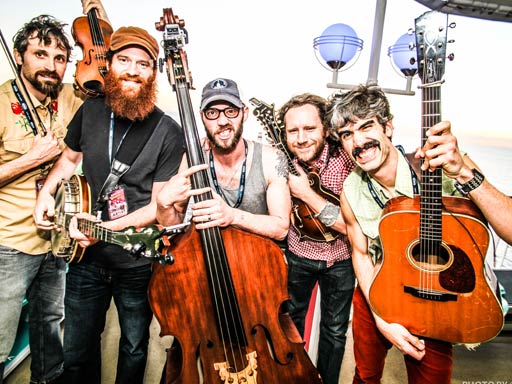
2015 began with the Packway Handle Band touring in support of their Yep Roc release, Take It Like A Man, alongside producer and collaborator, folk surrealist, Jim White. The band’s second consecutive voyage aboard Kid Rock’s annual Chillin’ the Most Cruise yielded an invitation to join Kid Rock and Foreigner for forty amphitheater shows on the 2015 Cheap Date Tour. The tour took the Athens five-piece to all corners of the continental United States and included 10-consecutive sold out shows at the DTE Energy Music Theater in Detroit, a feat that was commemorated by Billboard Magazine. Since the tour wrapped in mid-September, Packway played the industry-focused, Americana Music Festival in Nashville, Bristol Rhythm and Roots Reunion, and the Hardly Strictly Bluegrass Festival in San Francisco, CA. At long last, the boys are back in Georgia gearing up to hit the studio and record a new album.
Sam Bush
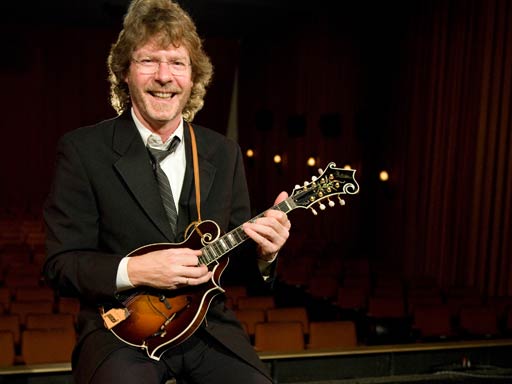
Grammy Award winning multi-instrumentalist Sam Bush doesn't seem old enough to be a musical legend. And he's not. But he is.
Alternately known as the King of Telluride and the King of Newgrass, Bush has been honored by the Americana Music Association and the International Bluegrass Music Association.
"It's overwhelming and humbling," Bush says of his lifetime achievement award from the AMA. "It goes along with the title cut of my new album, Circles Around Me, which basically says, how in the hell did we get this far? In my brain I'm still 17, but I look in the mirror and I'm 57."
But honors are not what drive him. "I didn't get into music to win awards," he says. "I'm just now starting to get somewhere. I love to play and the older I get the more I love it. And I love new things." Among those new things are the growing group of mandolin players that identify Bush as their musical role model in much the same way he idolized Bill Monroe and Jethro Burns.
"If I've been cited as an influence, then I'm really flattered because I still have my influences that I look up to," Bush says. "I'm glad that I'm in there somewhere."
He's being humble, of course. Bush has helped to expand the horizons of bluegrass music, fusing it with jazz, rock, blues, funk and other styles. He's the co-founder of the genre-bending New Grass Revival and an in-demand musician who has played with everyone from Emmylou Harris and Bela Fleck to Charlie Haden, Lyle Lovett and Garth Brooks.
And though Bush is best known for jaw-dropping skills on the mandolin, he is also a three time national junior fiddle champion and Grammy award winning vocalist.
"In the acoustic world, I've been pretty lucky to play with almost every one of my heroes. I've gotten to play with Bill Monroe, Doc Watson, Earl Scruggs, I've been to the mountain," says Bush with a smile.
But his greatest contribution may be his impact on the future. "I'm secure with what I can do and I know what I can't do," he says. "You just have to stand there and applaud the great young talent. "Chris Thile, Wayne Benson, Shawn Lane, Matt Flinner, Ronnie McCoury, Mike Marshall—they play in ways that I can't play," he says of today's younger generation of mandolin players. "I'm hoping to be around for is the next generation that comes along after that group. That's going to be something. The music keeps evolving.
Circles Around Me, Bush's seventh solo album and sixth with Sugar Hill, is an aurally inspiring mix of bluegrass favorites and complementary new songs. "I don't know why, but it felt right at this moment in my life to go back and revisit some things that I've loved all my life, which is bluegrass and, unapologetically, newgrass," says Bush. "After all these years of experimenting —and there's experimentation on this record too —I've come full circle."
Produced by Bush, the 14-song set includes appearances by Del McCoury, Edgar Meyer, Jerry Douglas and New Grass Revival co-founder Courtney Johnson (posthumously). The album also employs the phenomenal talent of Bush's band: Scott Vestal, Stephen Mougin, Byron House and Chris Brown.
"I get to play every show with my favorite musicians and I feel real fortunate," Bush says of his band. "I love playing with them. I feel like this group is limitless and they proved it again on this record." The title cut, which Bush co-wrote with Jeff Black, "is about being thankful that you're still here, that you're still alive walking around," Bush explains. "Why are we the ones still here when we've had fallen comrades and loved ones?"
"The Ballad of Stringbean and Estelle," which Bush co-wrote with Guy Clark and Verlon Thompson, is the haunting real-life story of the 1973 murder of Grand Ole Opry star David "Stringbean" Akeman and his wife.
Bush and Courtney Johnson, who died in 1996, were reunited thanks to New Grass Revival producer Garth Fundis, who found a previously unreleased recording with Bush and Johnson's fiddle and banjo pairing on "Apple Blossom" from 1976. "It's pretty special and means a lot to me."
Meanwhile, "Souvenir Bottles" and "Whisper My Name" are fine updates of songs Bush first recorded in his New Grass Revival days. "I guess I'm proud that I can still sing it in the key that we first cut it in," Bush says of "Whisper," which was on New Grass Revival's 1972 debut album.
Del McCoury, whom Bush first met in 1970, guests on two Bill Monroe songs, "Roll On Buddy, Roll On" and "Midnight On The Stormy Deep." "Del always encouraged me to sing," Bush says. "So I wanted to do these songs with him. 'Roll On' is one of the few songs Del ever recorded with Bill." Songs such as "Diamond Joe" and "You Left Me Alone" have roots in Bush's youth. The latter was on an album by the Country Gentlemen that Bush bought in the '60s. "It's a great 6/8 fast waltz tune and I am almost quoting John Duffey's mandolin playing note for note," he says. "It's a great tune and I've never heard anyone else do it."
The Bush-penned "Old North Woods" is a "Bill Monroe-sounding waltz," according to Bush, that features Meyer, his wife, Cornelia Heard of the Blair String Quartet, and their 16-year-old son, George, in his recording debut.
"With Emmy I learned more about singing and more about letting music breathe and I hope this CD is part of that thought," Bush says of Emmylou Harris, his former boss in the Nash Ramblers. "Through her I realized you don't have to whack people over the head with intensity on every song." There's plenty more of course and Bush fans new and old will find lots to love.
"It's crazy to think about," Bush says of his influence on today's crop of mandolin players. "I'm proud to be part of a natural progression in music. And I hope to still be playing 30 years from now." That said, it's not surprising that Bush still has goals. "I want to grow as a songwriter, as a song collaborator," he says. "There are still a lot of things I haven't discovered about playing mandolin. I want to be able to be secure in the styles that I know how to play well, but I also want to explore other styles that I haven't learned yet.
"I want to improve as a singer," he adds. "I have to work harder on singing than I do on playing." "As long as I'm alive I hope I have the ability to play," says Bush, a two time cancer treatment survivor. When the ability to play is taken away, it's humbling. It teaches you a lesson: don't take it for granted."
Here's to the next 30 years.
Tedeschi Trucks Band
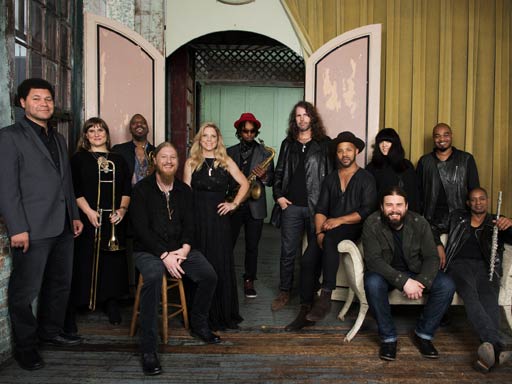
“Freedom is another word,” so the song went back in an easier and less costly time, “for nothing left to lose.” Freedom—the kind that Tedeschi Trucks Band has created for themselves since their inception in 2010—has come at a much higher price and required a deeper sense of dedication. It’s the kind of freedom that has allowed them to keep a band that has grown to more than a dozen musicians and crew on the road for five years, garnering an ever-increasing international audience, while developing a musical identity that has yielded original, award-winning recordings.
Let Me Get By is the third and latest studio album by the TTB, featuring ten new, original songs that together stand as a testament to the hard work, independent spirit, and now full-on commitment of the husband-and-wife team of Derek Trucks and Susan Tedeschi, plus the musicians and music professionals who are part of the band’s ongoing journey. The album’s artwork—a Mongolian golden eagle caught moments after flying from its master’s glove—and even the album title, reflect the sense of total dedication that serves as the driving wheel of TTB.
“’Let Me Get By’ actually refers to a lot of things,” says Trucks, “like the band becoming more self-reliant than ever before—writing our own songs and producing our own music in our own studio. It’s about moving on to a new recording label with a deal that gives us more freedom, and personally, I found myself with more time to focus on TTB after the Allman Brothers played their final shows this past year.
“It definitely took time for us to get here. I think the connections we have in this band and among the crew and extended family is the real reason why. I look around the stage every night and am just in awe of the situation—the music’s amazing and road-tested and we all really like each other. That’s what I hear in the music on this new album—this feeling that we’re now putting 100% of what we have into this band, not going back to anything else, not having anywhere else to go.”
The TTB journey began on April 1, 2010 with their first gig at the Savannah Music Festival, and led to the recording and release of their Grammy-winning debut album Revelator in 2011, and Made Up Mind two years later. During their five-year rise, the group toured incessantly, raising their profile and being handpicked to play with the likes of Eric Clapton, Bob Dylan, and Santana; to appear on television shows hosted by Jay Leno, Conan, and on the premiere of Stephen Colbert’s The Late Show; and hosting special all-star musical salutes themselves, including Bonnaroo’s Superjam in 2014 (with Chaka Khan, Anthony Hamilton, Taj Mahal, and others), and Lock’n Festival’s Tribute to Joe Cocker’s Mad Dogs & Englishmen in 2015 (with Leon Russell, Rita Coolidge, and many other original members.)
What began as an eight-piece group has now expanded to an onstage lineup of twelve musicians—a lineup that has remained unusually consistent. In 2015, for the fifth straight year, they were on the road for more than 200 days, and sold more tickets than ever before. Swamp Raga, the recording studio that Trucks and Tedeschi built from scratch next to their house, has been expanded and updated to the point that no other facilities are required. Bobby Tis, the band’s longtime, on-the-road monitor engineer has become their full-time studio engineer; Trucks himself now serves as sole producer. All tracks on Let Me Get By, to be released on January 29, 2016, are credited to Trucks, with three songs co-produced by guitarist and longtime collaborator Doyle Bramhall II.
“Derek hears everything from a big picture stance,” says his wife and band co-leader, singer/guitarist Susan Tedeschi. “Not just track by track but the album as a whole. What needs to be added, when a song is done, and he really knows how to get the best out of each player. On this album I feel like I was personally produced with more direction than I ever have. He instinctively knew when I could sing a better take, and would have a suggestion or two, and that really brought the best out of me.”
Let Me Get By is the culmination of an exceptionally busy year for TTB. The music on the album in fact, as guitarist and bandleader Trucks remembers, was born during tour rehearsals in their hometown of Jacksonville, Florida in January with an impromptu idea played by the band’s keyboardist. “The song ‘Let Me Get By” started at sound check one day, Kofi [Burbridge] playing that riff and then we took it into the studio and [singer] Mike Mattison and Sue went upstairs and the lyrics just poured out. It's a bunch of different true stories meshed into one.”
Like the group’s other recordings, Let Me Get By benefits from a number of musical elements that have become TTB trademarks: their deep sense of American roots music: rock, blues, soul, and especially gospel; Their balance of easy-flowing song structures and soaring, improvisational sections; Tedeschi’s spiritually charged vocals, and Trucks’ wide range of guitar tones, slide and picked, from back-alley, distorted rawness to Indian sitar-like sinuousness.
There are a number of characteristics that differentiate the music on this new album. One is a clearer, more mature musical identity that comes through a generous array of musical moods and feels. Tedeschi credits it to the inside familiarity among the group’s members: “the album didn’t come from any outside influence. This is the first time it’s all in-house, so I feel it's really a good look at the actual band in action, how we communicate together.” Trucks agrees, adding that “the band is in a better place than it's ever been that way. When everybody would be in the room anyone could just throw out ideas and everybody’d be willing to listen. You have to really trust each other and not be afraid of getting your feelings hurt. That’s more how it was at the beginning but now it’s a fun process, with everyone contributing.”
Another growth ring is a sense of expansion to TTB’s sonic signature. There’s an increased focus on Tedeschi’s powerful guitar playing (especially on “Don’t Know What It Means,” in which she solos powerfully before her husband’s guitar statement. As well, the album features the first lead vocals on a TTB album by Mike Mattison (on “Crying Over You” and “Right On Time”), whose mastery as a lyricist and songwriter has always been a central part of the TTB sound.
For Trucks, Let Me Get By is concrete evidence that the band is on the right track, and that more singular music will continue to flow from the expansive yet tightly connected musical family TTB has become. “There’s a lot of sacrifice that goes into a band like this and the fact that everybody’s on board musically, hearts and minds, makes it very humbling. There are nights on stage when I think I don’t know if it’s ever been more fun to be in a band and be on the road and be alive than it is right now with a group like this. For me, that’s the joy and the thankfulness that comes across in Let Me Get By.
“Susan and I take that seriously and at the same time, Susan started a kind of joke about it. After shows, she started to say to everyone, ‘Thanks for letting me be in your band’ and we’d all laugh. Now we all say it.”
Thomas Rhett

Years before he kicked off his career with It Goes Like This, a debut album that spawned five Top 40 hits and three Numbers Ones, Thomas Rhett spent his childhood listening to the sounds of FM radio.
"Growing up, there was no such thing as listening to one radio station," he remembers. Instead, Thomas Rhett would regularly flip from one station to another, cranking up a mix of country, pop, R&B, rap, rock, and oldies. It was a tangle of music. Decades later, he's tipping his hat to those days with Tangled Up, an album that mixes the sound of his influences with equal doses of groove, melody and twang.
Although recorded in his hometown of Nashville, Tangled Up was written all over America, during a year-long tour in support of Thomas' first album. There was something about the highway that made him feel creative. Something about the crowds that made him feel inspired. Something about the sold-out shows that made him want to return to the tour bus and write something exciting. With help from a handful of co-writers, Thomas whipped up a new batch of songs during the hours before soundcheck, after the encore, and during the long rides from one city to the next.
Maybe that's why Tangled Up feels like such an upbeat, energetic record. It was created while Thomas' body was still flushed with adrenaline.
"At our shows, there aren't any rules," he says. "There's no such thing as standing still and just singing a song. I love jumping into the crowd. I love to dance. The whole show is very uptempo, high energy, and completely unpredictable."
You could say the same about Tangled Up. Produced by Dan Huff and Jesse Frasure, the album is filled with party anthems, dance tunes, drinking songs, love ballads, and everything in between, all tied together by a dynamic singer who's unafraid to blur the lines between genres. Some songs take their influence from country stars like Eric Church. Others are more reminiscent of pop idols like Justin Timberlake or Bruno Mars. None of the tracks sound alike, but they do all sound like Thomas Rhett songs.
"I didn't grow up listening to just one style of music," he explains, "so I don't know how to write just one style of music. Whether these songs have more of a pop influence or more of a hip-hop influence or a completely country influence, they all — in some crazy way — cohesively sound like a me song."
They also sound like hit songs. "Crash and Burn," the album's first single, climbed into the Top 10 long before the album's release, and any number of the remaining tracks — from "South Side," a groove-heavy song co-written with Chris Stapleton, to "Die a Happy Man," a heartfelt tribute to Thomas Rhett's wife — could follow its climb up charts. Meanwhile, songs like "Single Girl" mix his country-boy croon with layers of poppy synthesizers, and "Tangled" models itself after Michael Jackson's dance floor jams.
"It's just so fun and so crazy," he says of the album, whose deluxe version also features Cameos by pop singer Jordin Sparks and hip-hop artist Lunch Money Lewis. "I think it kind of describes my life a bit. There's all these thoughts and all these melodies and all these different kind of songs on the record. It's all tangled up in knots, in a way. It's like this big ball of yarn that you can't every fully get undone, and I love that. I love that there's so much variety on the album, so that's why we chose Tangled Up as the name."
Zac Brown Band
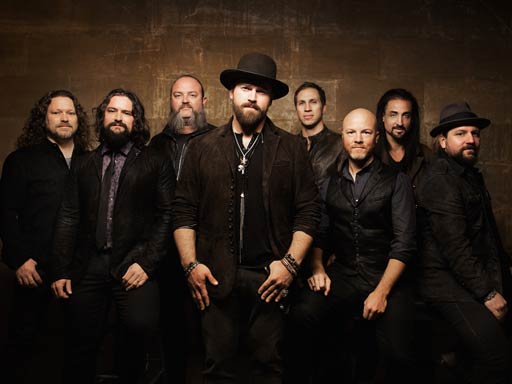
Three-time GRAMMY winners and multi-platinum artists Zac Brown Band have become one of music's most heralded acts. Their latest gold-certified album JEKYLL + HYDE, out now on Southern Ground Artists/John Varvatos Records/Big Machine Label Group/Republic Records, marks the band’s third consecutive #1 debut on the Billboard 200 chart. Together with their three platinum-selling albums, Uncaged, You Get What You Give, and The Foundation, and their 2013 project The Grohl Sessions Vol. 1, the band has sold over eight million albums to date. The band has earned a historic series of fourteen #1 hit radio singles and became only the second artist to top both the country and active rock formats. "Homegrown", the band's first single off of JEKYLL + HYDE, earned the title of the "No. 1 most-heard song of 2015" according to Mediabase.
Zac Brown Band is set to kick-off the "BLACK OUT THE SUN" tour this May 19th at Hartford’s XFINITY Theatre. The band's sixth headlining US concert tour follows on the heels of their largest North American Stadium Tour to date, which included two history making performances - a first ever sold-out, three-night run at Fenway Park, and the first-ever concert at Coors Field along with performances at Wrigley Field, Nationals Park, Citi Field, Comerica Park and Citizen's Bank Park. Zac Brown Band is managed by ROAR, a Beverly Hills-based artist and brand management company. The band is also represented by CAA, public relations firm Shore Fire Media and strategic digital marketing agency Girlilla Marketing. Additional information can be found at zacbrownband.com.
